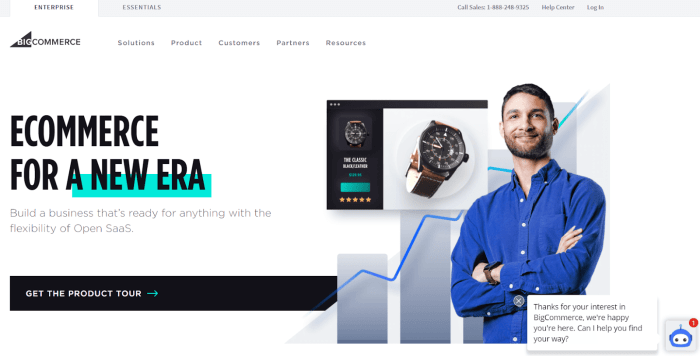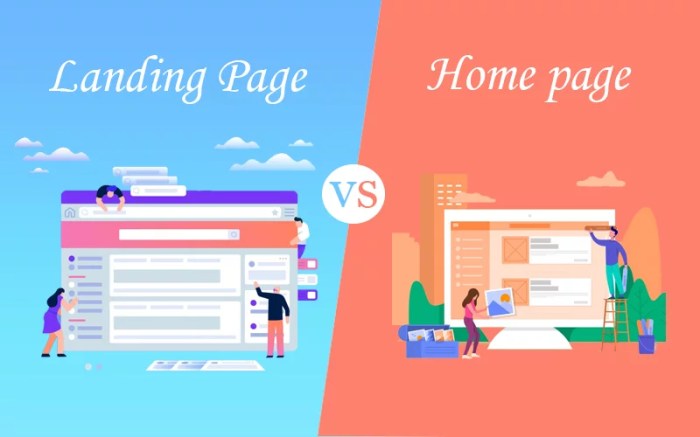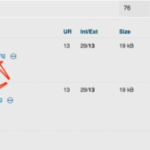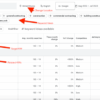Landing page vs homepage – a critical distinction for any website. This exploration delves into the nuances of each, highlighting their unique purposes, content strategies, and user experiences. We’ll examine how these pages work together within a broader marketing campaign, covering technical aspects, and even showcasing successful examples. Get ready to unlock the secrets of creating impactful landing pages and engaging homepages.
Understanding the difference between a landing page and a homepage is crucial for website success. A homepage acts as the primary gateway, aiming to establish brand awareness and provide navigation. In contrast, a landing page is meticulously crafted to achieve a specific conversion goal, like driving sales or collecting email addresses. This in-depth analysis will reveal the key distinctions between these two essential components of a well-structured website.
Defining the Concepts
Landing pages and homepages are crucial components of any website, serving distinct purposes. Understanding their differences is essential for effective website design and achieving marketing goals. A landing page is a dedicated page designed to convert visitors into customers, while a homepage acts as the primary gateway, providing an overview of the website’s offerings.A well-designed landing page focuses on a single, specific call to action, like signing up for a newsletter or purchasing a product.
Conversely, a homepage provides a broader view of the entire website, introducing the brand and its various services or products.
Landing Page Definition
A landing page is a single-purpose webpage created to drive a specific action, often a conversion. It’s optimized for a single goal, such as a lead capture, sale, or download. Landing pages are distinct from other website pages and are frequently used in marketing campaigns to achieve targeted objectives.
Homepage Definition
The homepage is the primary entry point to a website. It acts as a central hub, offering an overview of the site’s content, products, and services. It’s designed to welcome visitors and guide them to relevant sections of the site. A homepage’s goal is typically to introduce the brand and provide navigation.
Typical Purpose and Function
Landing pages are meticulously crafted to focus on a particular offer, highlighting its benefits and prompting a clear call to action. They are frequently used in marketing campaigns, lead magnets, and advertising to increase conversions. The homepage, in contrast, aims to establish brand identity and provide a comprehensive overview of the website’s offerings. It typically features navigation menus, company information, and potentially a few key promotions.
Common Characteristics and Differences
The following table highlights the key differences between landing pages and homepages:
| Feature | Landing Page | Homepage | Specific Example |
|---|---|---|---|
| Primary Goal | Conversion (e.g., sign-up, purchase) | Brand awareness, navigation | A landing page promoting a new software product; a homepage showcasing a company’s diverse product lines. |
| Content Focus | Specific offer, limited information | Broad overview, multiple sections | A landing page highlighting the key features of a new phone; a homepage featuring different sections for various product categories. |
| Design | Clean, focused layout, often featuring a single hero image | Visually appealing, showcasing the brand identity, including logos, navigation menus | A landing page focused on the simplicity of a product; a homepage emphasizing the brand’s history and culture. |
| Navigation | Minimal navigation, focusing on the single conversion goal | Extensive navigation, providing links to different pages and sections | A landing page with only a ‘Sign Up’ button; a homepage with a main menu and footer links. |
Content Strategy Differences
Landing pages and homepages, though both crucial for a website’s success, serve distinct purposes and require tailored content strategies. Understanding these differences is key to optimizing user experience and achieving marketing goals. Homepages are the front door, welcoming visitors and providing an overview of the site’s offerings. Landing pages, on the other hand, are specialized pages designed to capture leads and drive conversions for specific products or services.Effective content strategies for each page type focus on delivering the right message to the right audience at the right time.
The core difference lies in the intent. Homepages aim to attract and engage, while landing pages aim to convert. This difference in intent dictates the structure, content, and call-to-action strategies used for each.
Optimal Content Structure
The homepage’s structure should be clear, concise, and visually appealing, presenting a broad overview of the site’s offerings. It should showcase the brand identity, key features, and value propositions in a user-friendly format. Landing pages, conversely, require a focused structure that highlights a specific product, service, or offer. This typically involves a clear, concise explanation of the benefit, supporting details, and a prominent call to action.
Ever wondered about the subtle differences between a landing page and a homepage? They both play crucial roles in your website’s design, but a landing page is specifically designed to convert visitors into customers. To achieve this conversion, unlocking the power of marketing automation can streamline and supercharge your marketing efforts. unlock the power of marketing automation learn how to streamline and supercharge your marketing efforts Understanding the nuances of each page is key to creating a successful user experience.
Ultimately, a well-optimized landing page and a clear, concise homepage work together to build a strong online presence and drive business growth.
Call to Action (CTA) Strategies
Effective CTAs are critical to driving user engagement and achieving desired outcomes. Homepages use CTAs to guide users to deeper levels of the site. Landing pages employ CTAs to prompt immediate action, such as signing up or making a purchase.
CTA Types for Each Page Type
| Page Type | CTA Type | Example | Description |
|---|---|---|---|
| Landing Page | Button | “Sign Up Now” | Direct call to action, often visually prominent. |
| Landing Page | Form | “Request a Demo” (followed by a form) | Collects user information for a specific purpose. |
| Landing Page | Download | “Download Whitepaper” | Provides valuable content in exchange for contact information. |
| Homepage | Link | “Learn More” | Guides users to related pages with more in-depth information. |
| Homepage | Image/Video with Overlay | An image of a product with the text “Shop Now” | Visually engaging CTAs, leading to a specific product or section. |
User Experience (UX) Considerations
Landing pages and homepages, while both crucial for a website’s success, serve distinct purposes and thus require different UX approaches. Understanding these differences is vital for optimizing user engagement and driving conversions. A well-designed landing page focuses on a specific offer, while a homepage acts as a central hub, welcoming visitors and guiding them towards various options. This section delves into the nuances of UX design for each, highlighting key elements and best practices.The user experience (UX) on a landing page is critically different from that of a homepage.
A landing page is a highly focused experience, designed to convert a visitor into a lead or customer, while a homepage aims to engage and inform a broader audience, guiding them to various parts of the site. A good landing page UX is streamlined and clear, guiding the user towards a single call to action, while a homepage UX is more exploratory and provides options for different types of engagement.
Landing Page UX
Landing pages should be meticulously designed to maximize conversion rates. A strong landing page UX focuses on a single, clear message, eliminating distractions and emphasizing the value proposition. Visual hierarchy is essential to guide the eye toward the call-to-action (CTA).
- Clear Value Proposition: The core benefit of the product or service should be immediately apparent, ideally within the first few seconds of a visitor’s arrival. A strong headline and compelling subheadings communicate this benefit clearly.
- Minimalism: Avoid cluttering the page with irrelevant information. Keep the design clean and uncluttered, ensuring the CTA stands out.
- Compelling Visuals: High-quality images or videos that resonate with the target audience can greatly enhance engagement and trust. Visuals should complement, not distract from, the message.
- Intuitive Navigation: Ensure that navigation elements are unobtrusive and intuitive, focusing the user’s attention on the conversion goal.
A well-executed landing page might feature a concise headline directly stating the benefit, accompanied by a compelling image or video. The call-to-action button should be prominent and visually distinct, perhaps with a contrasting color. An example of a strong landing page would be one for a limited-time offer, clearly highlighting the scarcity and urgency.
Homepage UX
A homepage acts as the gateway to a website, introducing users to the brand and its offerings. A well-designed homepage creates a positive first impression and encourages exploration.
- Clear Brand Identity: The homepage should clearly convey the brand’s identity and personality, making it immediately recognizable to the user. This is crucial for establishing brand recognition.
- Easy Navigation: Intuitive navigation is crucial for guiding users to the specific information they seek. Clear and concise menus are essential.
- Compelling Storytelling: Highlighting the brand’s story and values can foster connection with users and build trust.
- Visually Appealing Design: A visually engaging design, including high-quality imagery and a user-friendly layout, creates a positive first impression and encourages exploration.
A homepage showcasing a range of services or products could feature a prominent carousel or slideshow highlighting key offerings. Large, clear calls to action for different sections of the site can also be effective in guiding users towards specific areas of interest. An example might be a homepage for a fashion retailer featuring a stunning product gallery and clear navigation to different categories.
Best Practices
- Mobile Responsiveness: A responsive design is crucial for all pages, ensuring a seamless experience across all devices.
- Performance Optimization: Fast loading times are critical for user satisfaction and .
- Accessibility: Ensure the page is accessible to users with disabilities, adhering to accessibility guidelines.
These practices are crucial for maintaining a consistent and high-quality experience across all platforms and devices. Visual consistency and appropriate use of whitespace, fonts, and colors create a polished and memorable aesthetic.
So, you’re wrestling with landing pages versus homepages? It’s a common struggle. A well-designed landing page focuses on a single conversion, like a sale or signup. Meanwhile, your homepage acts as the overall face of your site. But did you know that negative SEO tactics can severely impact your site’s performance, even affecting how visitors perceive your landing pages and homepage?
Understanding what is negative SEO is key to building a robust online presence. Essentially, it’s about actively working to damage a competitor’s site’s reputation and ranking. Ultimately, crafting effective landing pages and homepages is crucial for a strong online presence.
Technical Aspects: Landing Page Vs Homepage
Crafting effective landing pages and homepages involves more than just compelling content. The underlying technical structure plays a crucial role in how users interact with your site and ultimately, achieve your business goals. This section dives into the technical considerations, outlining best practices for website structure, speed optimization, and performance tracking.Technical implementation is critical to ensuring your website is not only visually appealing but also functions smoothly and efficiently.
A well-structured website is a key component of a successful digital presence. Poorly implemented technical elements can lead to a frustrating user experience, impacting conversions and brand perception.
URL Structure, Landing page vs homepage
A clear and consistent URL structure is fundamental for search engine optimization () and user navigation. Landing pages, designed to drive specific actions, should have URLs reflecting their purpose. Homepages, acting as the central hub, should have a straightforward URL structure for easy access. This is crucial for search engines to understand the content and for users to easily locate the page they need.
Using descriptive s in URLs can enhance and user experience.
Page Load Time
Website speed is paramount. Slow-loading pages lead to high bounce rates, decreased user engagement, and a negative impact on search engine rankings. Landing pages, especially, must load swiftly to maximize conversion opportunities. Homepage performance also affects user retention and the overall perception of the website. Optimization techniques, including image compression, browser caching, and server-side rendering, are essential to minimize page load time.
Websites with optimized page load times tend to rank higher in search results and have improved user engagement metrics.
Website Structure
A well-organized website structure is vital for user navigation and . Homepage structure should guide users to key sections and information quickly. Landing page structure should be concise and focused on the desired conversion. A logical hierarchy, clear navigation menus, and intuitive internal linking are key elements to ensure users can easily find what they need. This enhances the user experience and enables search engines to index and understand the website’s content effectively.
Talking about landing pages versus homepages? It’s a pretty common question, but the recent Google AI Workspace update is adding a layer of complexity. The pricing changes surrounding this new offering are causing quite a stir, as detailed in this article on googles ai workspace update sparks confusion around pricing. Ultimately, understanding these shifts in the tech landscape is crucial for crafting effective landing pages that convert.
The confusion around pricing might make it harder to design a clear call-to-action, but knowing the ins and outs of Google’s new AI Workspace is key to a great user experience.
Responsiveness
Ensuring a website’s responsiveness across different devices (desktops, tablets, mobile phones) is essential. A responsive design adapts to various screen sizes and orientations, delivering a consistent and seamless user experience. Landing pages, crucial for conversions, must function seamlessly on mobile devices. Homepages should also be accessible and intuitive on all devices, promoting inclusivity and broader reach. Responsive design is crucial for achieving optimal performance across different platforms and devices.
Tracking Page Performance
Monitoring website performance is crucial for identifying areas for improvement. Tools such as Google Analytics, WebPageTest, and Pingdom provide valuable insights into page load times, user behavior, and conversion rates. Using these tools allows for proactive optimization, ensuring optimal performance and user experience. Tracking allows for data-driven decisions, enhancing the overall performance and effectiveness of the website.
Summary Table
| Aspect | Landing Page | Homepage | Explanation |
|---|---|---|---|
| URL Structure | /product-name/landing-page | / | Landing pages use specific URLs for targeted actions, while the homepage uses the root URL for broad navigation. |
| Page Load Time | Optimize for speed to maximize conversion opportunities. | Optimize for speed to enhance user retention and overall perception. | Both landing and homepage performance hinges on fast loading times to maintain user engagement and conversion rates. |
Marketing and Promotion

Landing pages and homepages, though both crucial components of a website, serve distinct purposes within a marketing strategy. Understanding these differences is key to crafting effective promotional campaigns that drive desired user actions. A homepage acts as the primary gateway to a website, providing a comprehensive overview of the brand and its offerings. In contrast, a landing page is a dedicated, focused page designed to convert visitors into leads or customers by prompting a specific action.A well-structured marketing plan leverages both to create a cohesive user experience.
The homepage provides context and brand identity, while landing pages capitalize on user interest and drive conversions. Effectively utilizing both tools leads to a more streamlined user journey, converting potential customers into loyal advocates for the brand.
Promotional Strategies
Different promotional strategies are necessary for landing pages and homepages due to their unique roles. Homepage promotion focuses on broad reach and brand awareness. Strategies often include search engine optimization (), social media marketing, and content marketing. These efforts aim to attract a large audience and establish the brand as a reputable and trustworthy source in its industry.
Landing pages, conversely, are targeted and focused on specific campaigns. These pages often use paid advertising, email marketing, and retargeting to reach a highly segmented audience already interested in the specific product or service.
Role in Broader Marketing Campaigns
Homepages serve as the central hub for a marketing campaign, introducing the brand and its offerings. They act as a crucial touchpoint for potential customers, guiding them to the relevant landing pages based on their interests. Landing pages, in contrast, are designed for conversions. They are a vital part of the sales funnel, providing a dedicated space for specific offers, promotions, and calls to action.
A well-designed marketing campaign should integrate both, leveraging the homepage for brand building and landing pages for conversion optimization.
A/B Testing for Optimization
A/B testing is critical for optimizing both landing pages and homepages. By testing different variations of elements like headlines, calls to action (CTAs), and images, marketers can identify which elements resonate most strongly with their target audience. Testing should focus on improving conversion rates on landing pages and improving user engagement on homepages. For instance, A/B testing different button colors on a landing page can significantly affect click-through rates.
Tracking Campaign Performance
Tracking campaign performance is essential for understanding the effectiveness of promotional efforts. Web analytics tools like Google Analytics can provide valuable insights into user behavior on both landing pages and homepages. These insights allow marketers to identify areas for improvement and refine strategies for optimal results. Tracking metrics such as bounce rate, time on page, and conversion rate provide key indicators of campaign effectiveness.
These tools are crucial for gauging the success of promotional efforts and for refining future strategies.
Clear Calls to Action (CTAs)
Clear calls to action are paramount for both landing pages and homepages. A compelling CTA compels users to take a specific action, such as signing up for a newsletter, downloading a resource, or making a purchase. CTAs should be concise, easily visible, and clearly communicate the desired outcome. A strong CTA on a landing page, for example, could be “Get Your Free Trial Now!” or “Request a Demo Today!”.
These clear and actionable instructions guide users toward the desired conversion.
Case Studies and Examples

Landing pages and homepages are critical touchpoints for any online business. Understanding successful examples allows us to analyze effective strategies and tailor approaches for maximum impact. Learning from others’ triumphs and mistakes can be a powerful catalyst for innovation and growth in your own digital presence.Effective landing pages and homepages often share similar characteristics, focusing on clear messaging, intuitive navigation, and compelling calls to action.
Analyzing these key elements through successful case studies helps to demonstrate how they function in practice. This section explores real-world examples, highlighting the factors that contributed to their success.
Example 1: Shopify’s Homepage
Shopify’s homepage is a masterclass in showcasing a broad range of products and services while maintaining a clear, simple design. The prominent visuals immediately convey the platform’s ease of use and broad capabilities. The homepage is a concise overview of Shopify’s features, targeting both beginners and seasoned e-commerce professionals. The homepage includes clear calls to action, encouraging visitors to start a free trial, explore the platform, or learn more.
A key factor in its success is its ability to cater to diverse needs without overwhelming the user.
Example 2: Grammarly’s Landing Page
Grammarly’s landing page excels in highlighting the problem it solves. The page uses a strong visual narrative showcasing the negative consequences of poor grammar. This is immediately followed by a clear demonstration of Grammarly’s effectiveness. It effectively addresses the pain points of its target audience – writers, students, and professionals – through a well-designed layout. The page includes a clear call to action to sign up for a free trial, driving immediate conversions.
Example 3: HubSpot’s Landing Page for Lead Magnets
HubSpot’s landing pages for lead magnets are highly effective due to their focused approach. They address a specific pain point or need of the target audience. For instance, a landing page for a free ebook about content marketing directly targets marketers seeking to enhance their content strategy. This focus creates a strong sense of value for the user.
The page is designed with a single, prominent call to action that is clearly defined and visible. The clear value proposition and a user-friendly layout, along with a clear call to action, drive high conversion rates.
Example 4: Asana’s Homepage
Asana’s homepage exemplifies the power of showcasing real-world application. The homepage showcases a variety of successful user stories, demonstrating the software’s ability to help teams manage tasks and projects. The page features prominent visuals, which are highly relatable and highlight the positive outcomes Asana helps its users achieve. This user-centric approach is a critical factor in their success.
The use of testimonials and real-world examples provides social proof, further reinforcing Asana’s value proposition.
Concluding Remarks
In conclusion, while both landing pages and homepages are vital for a website, they serve distinct purposes. Homepages are the welcoming front door, showcasing the brand and guiding users. Landing pages are the targeted pathways, focused on achieving a specific action. Knowing how to optimize each, from content strategy to technical implementation, is essential for achieving desired outcomes within a comprehensive marketing strategy.
This analysis provides a clear roadmap for anyone seeking to build high-performing websites.






